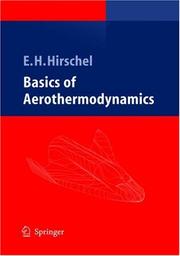| Listing 1 - 4 of 4 |
Sort by
|
Periodical
ISSN: 18728197 01676105 Year: 1980 Publisher: Amsterdam : Elsevier Science Pub. Co.,
Abstract | Keywords | Export | Availability | Bookmark
 Loading...
Loading...Choose an application
- Reference Manager
- EndNote
- RefWorks (Direct export to RefWorks)
Buildings --- Wind-pressure --- Aerodynamics --- Pression du vent --- Constructions --- Périodiques. --- Aérodynamique --- Edifices --- Halls --- Structures --- Wind loads --- Architecture --- Engineering meteorology --- Live loads --- Pressure --- Structural dynamics --- Built environment --- Periodicals. --- Wind-pressure. --- Aerodynamikk --- Bygningskonstruksjoner --- Aerodynamics. --- Vindlast

ISBN: 1680158996 9781400860777 1400860776 9781680158991 9780691085364 0691085366 0691604215 9780691604213 0691085366 9780691604213 Year: 1990 Publisher: Princeton, New Jersey : Princeton University Press,
Abstract | Keywords | Export | Availability | Bookmark
 Loading...
Loading...Choose an application
- Reference Manager
- EndNote
- RefWorks (Direct export to RefWorks)
Originator of many of the theories used in modern wing design, Robert T. Jones surveys the aerodynamics of wings from the early theories of lift to modern theoretical developments. This work covers the behavior of wings at both low and high speeds, including the range from very low Reynolds numbers to the determination of minimum drag at supersonic speed. Emphasizing analytical techniques, Wing Theory provides invaluable physical principles and insights for advanced students, professors, and aeronautical engineers, as well as for scientists involved in computational approaches to the subject. This book is based on over forty years of theoretical and practical work performed by the author and other leading researchers in the field of aerodynamics.Originally published in 1990.The Princeton Legacy Library uses the latest print-on-demand technology to again make available previously out-of-print books from the distinguished backlist of Princeton University Press. These editions preserve the original texts of these important books while presenting them in durable paperback and hardcover editions. The goal of the Princeton Legacy Library is to vastly increase access to the rich scholarly heritage found in the thousands of books published by Princeton University Press since its founding in 1905.
Airplanes --- Aerofoils --- Aerodynamics --- Mechanical Engineering --- Engineering & Applied Sciences --- Aeronautics Engineering & Astronautics --- Aerodynamics, Subsonic --- Streamlining --- Subsonic aerodynamics --- Dynamics --- Fluid dynamics --- Gas dynamics --- Pneumatics --- Aeronautics --- Wind tunnels --- Airfoils --- Wings (Airplanes) --- Airframes --- Oscillating wings (Aerodynamics) --- Wings --- Aerodynamics. --- Aerofoils. --- Airplanes -- Wings. --- Aérodynamique --- Aile (anatomie) --- Aérodynamique --- Surface portante --- Wings.
Book
ISBN: 9780262526449 0262526441 9780262319928 0262319926 9781628709209 1628709200 Year: 2014 Publisher: Cambridge, Mass. The MIT Press
Abstract | Keywords | Export | Availability | Bookmark
 Loading...
Loading...Choose an application
- Reference Manager
- EndNote
- RefWorks (Direct export to RefWorks)
This book offers a general overview of the physics, concepts, theories, and models underlying the discipline of aerodynamics. A particular focus is the technique of velocity field representation and modeling via source and vorticity fields and via their sheet, filament, or point-singularity idealizations. These models provide an intuitive feel for aerodynamic flow-field behavior and are the basis of aerodynamic force analysis, drag decomposition, flow interference estimation, and other important applications. The models are applied to both low speed and high speed flows. Viscous flows are also covered, with a focus on understanding boundary layer behavior and its influence on aerodynamic flows. The book covers some topics in depth while offering introductions and summaries of others. Computational methods are indispensable for the practicing aerodynamicist, and the book covers several computational methods in detail, with a focus on vortex lattice and panel methods. The goal is to improve understanding of the physical models that underlie such methods. The book also covers the aerodynamic models that describe the forces and moments on maneuvering aircraft, and provides a good introduction to the concepts and methods used in flight dynamics. It also offers an introduction to unsteady flows and to the subject of wind tunnel measurements. The book is based on the MIT graduate-level course "Flight Vehicle Aerodynamics" and has been developed for use not only in conventional classrooms but also in a massive open online course (or MOOC) offered on the pioneering MOOC platform edX. It will also serve as a valuable reference for professionals in the field. The text assumes that the reader is well versed in basic physics and vector calculus, has had some exposure to basic fluid dynamics and aerodynamics, and is somewhat familiar with aerodynamics and aeronautics terminology.
Aerodynamics --- Gas flow --- Boundary layer --- Unsteady flow (Aerodynamics) --- Aérodynamique --- Gaz --- Fluides, Dynamique des --- Couche limite --- Écoulement --- Aerodynamics. --- Gas flow. --- Boundary layer. --- 629.78 --- Aerodynamics, Unsteady --- Flow, Transient (Aerodynamics) --- Flow, Unsteady (Aerodynamics) --- Transient flow (Aerodynamics) --- Unsteady aerodynamics --- Unsteady flow (Fluid dynamics) --- Fluid dynamics --- Flow of gas --- Gases, Flow of --- Gas dynamics --- Air flow --- Aerodynamics, Subsonic --- Airplanes --- Streamlining --- Subsonic aerodynamics --- Dynamics --- Pneumatics --- Aeronautics --- Wind tunnels --- History of spaceflight engineering. History of astronautics and spacecraft --- Aérodynamique. --- Fluides, Dynamique des. --- Couche limite. --- Écoulement. --- Dynamique des fluides. --- Aérodynamique. --- Écoulement. --- Fluid mechanics

ISBN: 3540221328 3642060501 9786610459889 1280459883 3540265198 Year: 2005 Publisher: Berlin : Springer,
Abstract | Keywords | Export | Availability | Bookmark
 Loading...
Loading...Choose an application
- Reference Manager
- EndNote
- RefWorks (Direct export to RefWorks)
This book gives an introduction to the basics of aerothermodynamics, as applied in particular to winged re-entry vehicles and airbreathing cruise and acceleration vehicles. Beginning with a broad vehicle classification and a discussion of the flight environment, Basics of Aero-thermodynamics focuses on flight in the earth's atmosphere at speeds below approximately 8.0 km/s at altitudes below approximately 100.0 km. At such flight conditions the outer surfaces of hypersonic flight vehicles primarily are radiation cooled. This is taken into account by an introduction to the problem of the thermal state of the surface, and especially to the phenomena connected with surface radiation cooling. These are themes, which reappear throughout the remaining chapters. The implications of radiation cooling are different for the different vehicle classes. In any case the properties of both attached viscous and separating flows as well as thermo-chemical effects at and near the vehicle surface need to be considered. After a review of the issues of transport of momentum, energy and mass, real-gas effects as well as inviscid and viscous flow phenomena are treated. In view of their special importance for airbreathing hypersonic flight vehicles and for the discrete numerical methods of aerothermodynamics, considerable discussion is devoted to the issues of laminar-turbulent transition and turbulence, which follows a treatment of strong-interaction phenomena. Finally, simulation techniques for aerothermodynamics are considered, including computational methods and their modelling problems, as well as the problems of ground facility and in-flight simulation, including the hot experimental technique. The implications of Oswatitsch's Mach number independence principle are also treated. The book is for graduate students, doctoral students, design and development engineers, but also for technical managers. The reader should be familiar with the basics of fluid mechanics, aerodynamics, and thermodynamics.
Aerothermodynamics. --- Aerodynamics, Hypersonic. --- Aérothermodynamique --- Aérodynamique hypersonique --- Aerothermodynamics --- Aerodynamics, Hypersonic --- Mechanical Engineering --- Engineering & Applied Sciences --- Aeronautics Engineering & Astronautics --- Automotive Engineering --- High-speed aeronautics. --- Hypersonic planes. --- Aérothermodynamique --- Aérodynamique hypersonique --- EPUB-LIV-FT LIVINGEN SPRINGER-B --- Aeronautics, High-speed --- High-speed flight --- Supersonic aeronautics --- Hypersonic aircraft --- Planes, Hypersonic --- Thermoaerodynamics --- Engineering. --- Computational intelligence. --- Thermodynamics. --- Heat engineering. --- Heat transfer. --- Mass transfer. --- Continuum mechanics. --- Fluid mechanics. --- Automotive engineering. --- Automotive Engineering. --- Computational Intelligence. --- Engineering, general. --- Engineering Thermodynamics, Heat and Mass Transfer. --- Continuum Mechanics and Mechanics of Materials. --- Engineering Fluid Dynamics. --- Hydromechanics --- Continuum mechanics --- Mechanics of continua --- Elasticity --- Mechanics, Analytic --- Field theory (Physics) --- Mass transport (Physics) --- Thermodynamics --- Transport theory --- Heat transfer --- Thermal transfer --- Transmission of heat --- Energy transfer --- Heat --- Mechanical engineering --- Chemistry, Physical and theoretical --- Dynamics --- Mechanics --- Physics --- Heat-engines --- Quantum theory --- Intelligence, Computational --- Artificial intelligence --- Soft computing --- Construction --- Industrial arts --- Technology --- Airplanes --- High-speed aeronautics --- Aeronautics --- Aerodynamics, Supersonic --- Aerodynamics, Transonic --- Astronautics --- Mechanics. --- Mechanics, Applied. --- Hydraulic engineering. --- Solid Mechanics. --- Engineering, Hydraulic --- Engineering --- Fluid mechanics --- Hydraulics --- Shore protection --- Applied mechanics --- Engineering, Mechanical --- Engineering mathematics --- Classical mechanics --- Newtonian mechanics
| Listing 1 - 4 of 4 |
Sort by
|

 Search
Search Feedback
Feedback About UniCat
About UniCat  Help
Help News
News